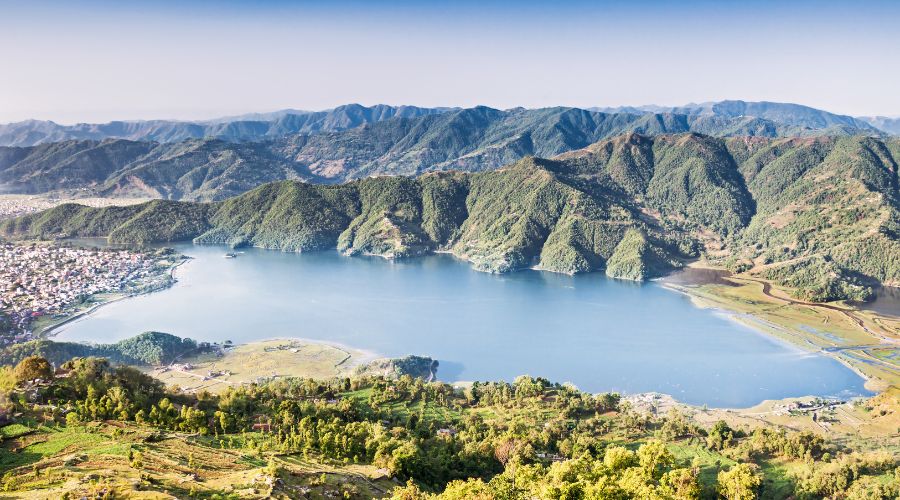
13 Best Things to Do in Pokhara

13 Best Things to Do in Pokhara
swotah travel
1124
01, 02 2024
Pokhara, “the city of lakes,” is more than just a beautiful place, it is the land for explorers and adventure seekers. Located on the Lap of Annapurna range at 822m above sea level, this city is a muse that has a perfect symphony of natural and cultural/spiritual bliss.
It has a total area of 464.2 sq. km and is 201 km away from Kathmandu Valley. Surrounded by the snow-white mountains, sheltering more than eight freshwater lakes, historical museums, temples that hold religious significance, panoramic views, and unique cultural and traditional practices of the locals, Pokhara has it all. It is no surprise that Pokhara is on the list of every travel freak around the world. If you are one of them and have questions about what the city has to offer you, we got you!
Here is the list of the 13 best things to do in Pokhara:
1. Visit all of the major lakes of Pokhara
Pokhara, often associated with its scenic lakeside, is not just about the famous Phewa Tal. This "city of 8 lakes" boasts other stunning freshwater bodies like Rupa Lake, Begnas Tal, Nyureni Tal, Khatste Tal, Gunde Tal, and Maidi Tal. The charm of Pokhara's lakes, especially at night, is unparalleled. The lakes beautifully mirror the snow-capped Annapurna mountains and the city's twinkling lights, creating an absolutely unforgettable mesmerizing view.
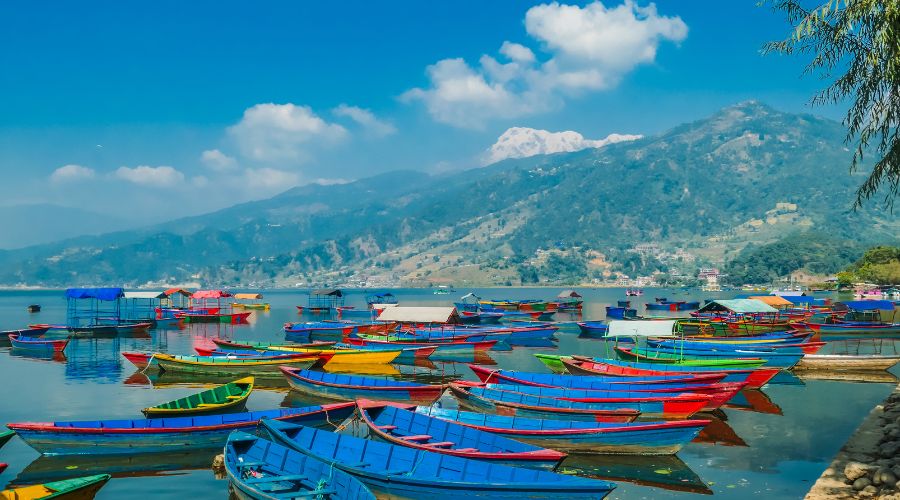
2. The World Peace Pagoda
The World Peace Pagoda, or Shanti Stupa, situated on Anadu Hill, was inaugurated on September 12, 1973. It impressively stands at 115 feet in height and spans 344 feet in diameter. This Pagoda is notable for its profound symbolic significance, embodying key aspects of Buddhist teachings such as the cycle of life, dharma, intellect, and grace. Its second tier features four statues, each representing significant events in Buddhism. Beyond its religious importance, the World Peace Pagoda is also a serene spot for meditation, offering breathtaking panoramic views. It's a must-visit destination for those travelling to Pokhara.
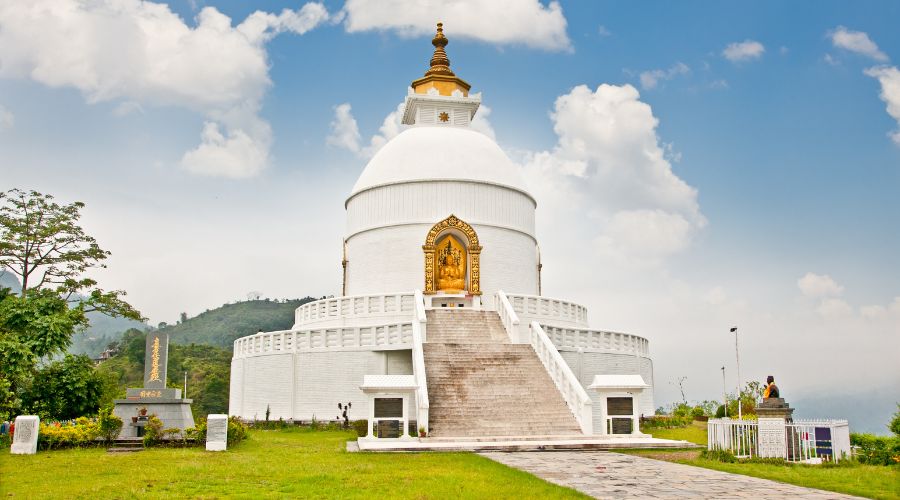
3. The sunrise view from Sarangkot
Sarangkot, a viewpoint about 17.8 km from Phewa Lake and 1600 meters above sea level, offers a breathtaking sunrise. The climb to the viewpoint is manageable, taking about an hour. The sunrise casts a golden glow over the surrounding peaks, including Mt. Dhaulagiri, Mt. Annapurna, and Mt. Manaslu, and provides a stunning aerial view of Pokhara City and Phewa Tal. Although Sarangkot was once a popular paragliding spot, this activity has since been relocated.
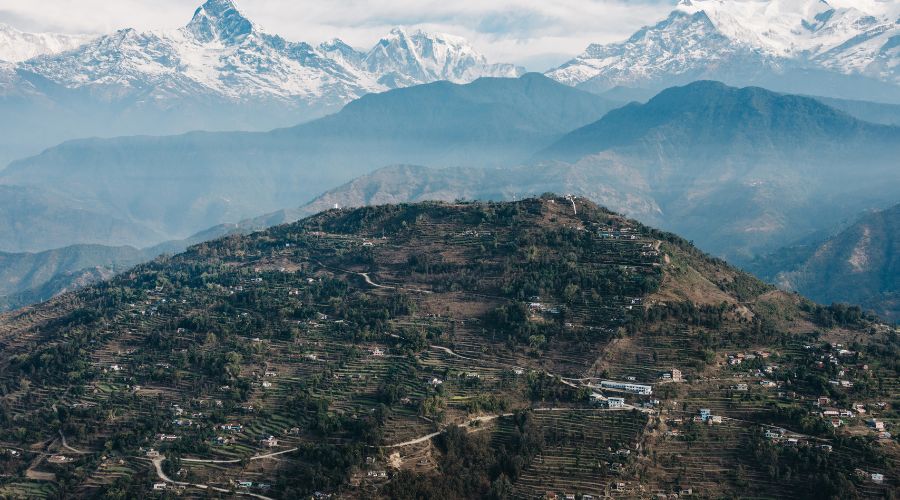
Also Read: Best Short Treks from Pokhara
4. Paragliding
Sarangkot’s Paragliding hub has now shifted to Mandre Dhunga, which is situated at an altitude of 1788 m / 5866 ft. It is 1600 m / 5249.344 ft higher than the Sarangkot’s Paragliding Hub. Pokhara is listed in the top five best places for the Tandem Paragliding all around the world.
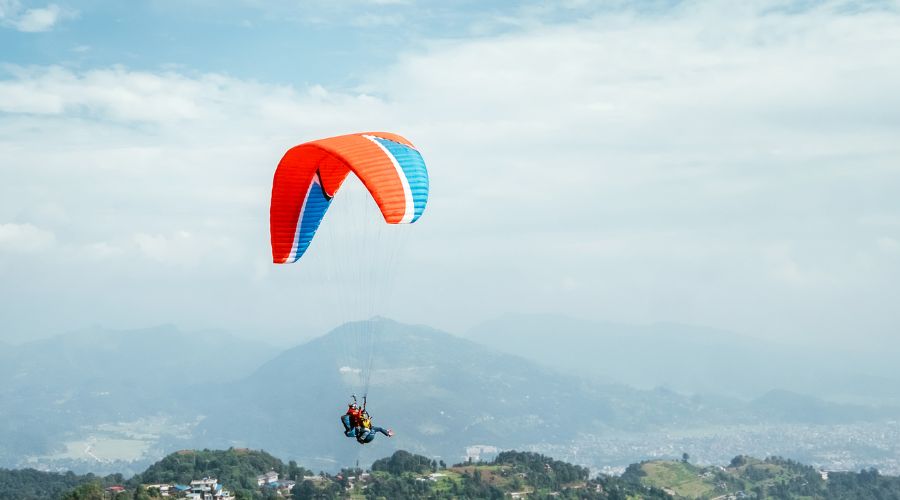
In Tandem Paragliding, you will be seated in front of the Pilot who is guiding you throughout hence the better option for newbies than the Solo Paragliding. The Paraglide costs around $75 to $95. It varies with the season and company. Although paragliding can be done in Pokhara all around the year, February, March, April, May, September, October, and November are busier because of the weather, as heavy rains during June and July make it dangerous. When in Pokhara, make sure to Paraglide!
5. Devi’s Fall
Devi’s Fall, also known as Patale Chango, is about a 7 km drive away from the Phewa Tal. It is 48 meters high and has a length of 1479 meters. This cascading waterfall gets its name from a tragic mythical tale of a Swiss woman named David being Swept away and found 3 days later in Phusre Khola.
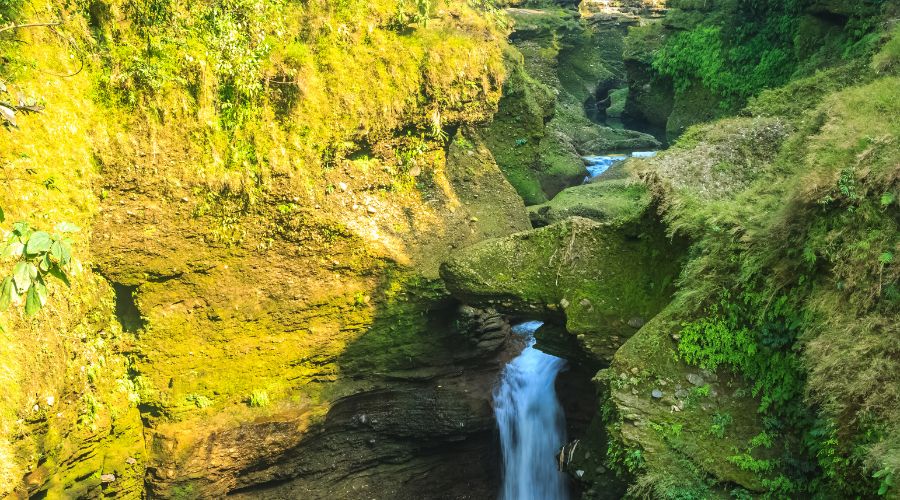
At the very end of this beautiful waterfall lies a 100 ft (150 meters ) tunnel below the ground level and 50 ft (30 meters) long. Devi’s Fall holds religious belief that says it is possible to gain the knowledge of Brahmanhood if done correctly. The awestruck view of the largest waterfall in Pokhara has one of the fastest-flowing waters and geographical structures.
6. Bindhyabasini Temple
Built by the king of Kaski, Siddhi Narayan Shah, approximately during the 1760s, the Bindhyabasini temple is the oldest temple in Pokhara. The temple has Sikhara architecture. It is one of the most worshipped pilgrimage sites of the goddess Durga / Bhagwati, especially by the locals of Pokhara. Near the main Durga temple are Saraswati temple, Hanuman temple, Shiva temple, Krishna temple, Bishnu temple, and Ganesh temple. Recitals, prayers, and traditional practices are performed in the Bindhyabasini temples during the festival of Shiva Ratri and Phulpati of Dashain.
Note: The temple is just 5.5 km away from Lakeside and takes about 15 minutes of drive.
Also Read: How do I get to Pokhara from Kathmandu?
7. Explore the nightlife of Lakeside
Nighttime in Pokhara takes you to a different world, whether you are a party person or someone who seeks solitude. Roaming around Phewa Lake with all the city lights and reflection of the majestic mountains on it is just out of this world.

Similarly, for people who like to go wild, there are many clubs and bars where one can dance, listen to live music, and let loose. Some of the most known clubs/bars for the nighttime adventure are All That Jazz, Club Nasha, Ozone Premium Club, etc., and for those who like it, check out the Movie Garden. This place has an amphitheatre where you can watch movies in a peaceful ambiance under the starry night.
8. Visit as many caves as you can
Pokhara, a gem in Nepal, is renowned for its captivating caves, each with its own unique allure. Among the most sought-after are the Mahendra, Gupteshwor Mahadev, and Bat Caves.
-
Mahendra Cave: Discovered in 1950, this cave honors the late King Mahendra Bir Bikram Shah Dev. Inside, visitors can marvel at the stunning stalagmites and stalactites, and a statue of Lord Shiva. With a length of 200 meters, it's the second-longest cave in Pokhara, offering a mystical journey underground.
-
Gupteshwor Mahadev Cave: Known since the 16th century, it's celebrated as Nepal's longest cave at 2950 meters. This cave holds spiritual significance, with many pilgrims visiting to worship deities like Lord Shiva, Goddess Saraswati, Goddess Parvati, and Nageshwor. It's a fusion of natural beauty and spiritual reverence.
-
Bat Cave: Discovered in 1983, it's famous for the bats that inhabit it. This cave offers a unique experience, allowing visitors to witness these nocturnal creatures in their natural habitat.
For visitors, ticket pricing varies:
-
Mahendra Cave: NPR 50 for Nepalese, NPR 30 for Nepalese students, NPR 80 for SAARC countries' citizens, and NPR 150 for foreigners (USD 1.13).
-
Gupteshwor Mahadev Cave: NPR 50 for Nepalese, NPR 35 for Nepalese students, and NPR 100 for foreigners (USD 0.76).
-
Bat Cave: Similar pricing to Mahendra Cave.
Each cave offers a distinct glimpse into Pokhara's underground wonders, making them a must-visit for both nature enthusiasts and spiritual seekers.
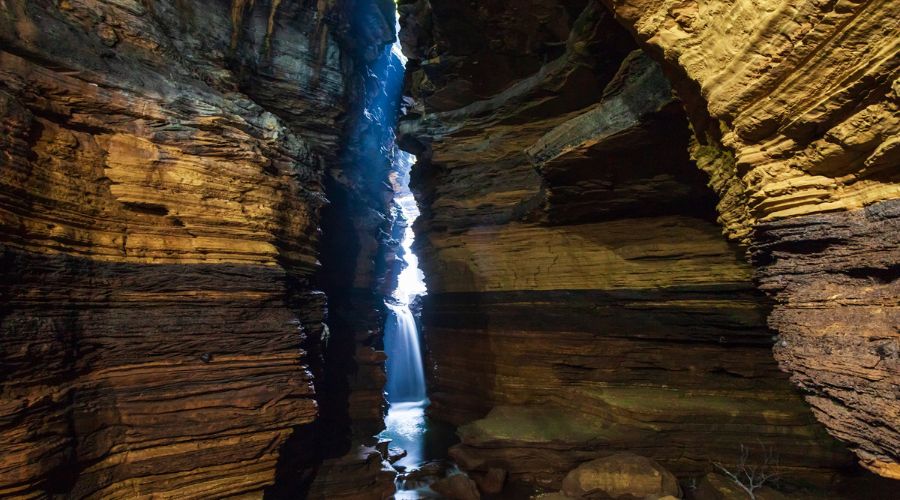
9. Explore Pokhara through its Museums
Pokhara has many museums that reflect different aspects of the city. Three must-visit museums are the International Mountain Museum, Gurkha Memorial Museum, and Annapurna Butterfly Museum. The International Mountain Museum holds mountains and mountaineers' history. The Gurkha Museum boasts the bravery of the Gurkhas and protects its roots. The Annapurna Butterfly Museum is known for its entire room dedicated to its unique butterfly collection and other plants and animals.
The ticket price for the International Mountain Museum is NPR 50 for Nepalese citizens.NPR 35 is for Nepalese students, NPR 100 is for citizens of SAARC countries, and NPR 300 is for foreigners ( USD 2.27).
Ticket price for Gurkha Memorial Museum: NPR 20 for Nepalese citizens. NPR 100 is for citizens of SAARC countries, and NPR 200 is for foreigners ( USD 2.27).
Annapurna Butterfly Museum is free!
10. Zip flyer (the world's steepest zipline)
The Zip Flyer in Pokhara is the world’s steepest zipline. It starts from Sarangkot and ends in Hemja ( starting point elevation - 1600 m / 5249.344 ft, ending point elevation - 1097 m / 3599 ft). This zip flyer is 1.8 km long and has more than 600 m of vertical drop. This 2-minute long zipline is magical as one gets the astonishing sight of Mt. Annapurna, Mt. Machhapuchre, Mt. Dhaulagiri, Seti River, and Pokhara Valley. The zip flyer price for foreigners is NPR 8000 ($60.29), and for Nepalese is NPR 6000 ( $45.21). If you are an adrenaline sucker, then the Zip Flyer of Pokhara is for you.
11. Rafting
Pokhara is one of the best places in Nepal for rafting. Some of the most known rafting here are Kaligandaki River rafting, Upper Seti River rafting, Upper Trishuli River rafting (1 night 2 days long), and Trishuli River rafting(1 day long). The Upper Seti rafting has options for half-day and one-day long rafts, and the Kaligandaki River has options for 1 night 2 days and 2 nights 3 days long rafts.
Price for 1 night 2 days Kaligandaki River Rafting- approximately -$120
Price for 2 nights 3 days Kaligandaki River Rafting- approximately -$175
Price for 1 night 2 days Upper Trishuli - approximately -$40
Price for half-day and one-day Upper Seti River Rafting- approximately -$50
Price for 1 day Trishuli River Rafting- approximately -$30
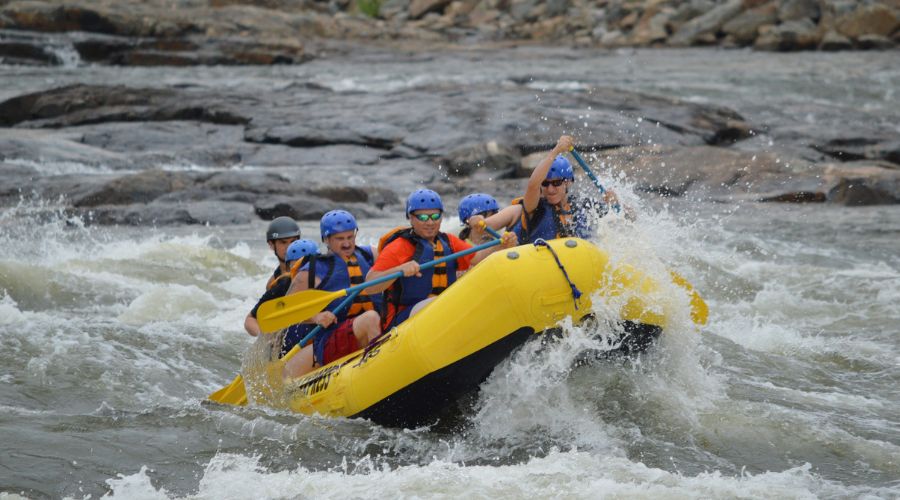
12. Explore the Lakes of Pokhara and boat on them.
Pokhara is blessed with eight freshwater lakes namely: Phewa Lake, Begnas Lake, Rupa Lake, Khaste Lake, Gunde Lake, Maidi Lake, Dipang Lake, and Nyureni Lake. These lakes alone are a sight to behold especially during the night when it gets lit up with city lights and the surreal surrounding view of mountains like Dhaulagiri, Manaslu, Machhapuchre, Annapurna, etc. One can boat or kayak in the Phewa Lake, Barahi Lake, Rupa Lake, and Begnas Lake enjoying the picturesque view of Pokhara city. Taking a paddle boat costs NPR 500 ($3.77) the prices gradually go up with the increase in hours.
13. Enjoy delicious local cuisines
This is the place where one gets to try local authentic foods, newari foods and modernized Nepali dishes. During your trip to Pokhara, do try fried trout fish that is freshly caught around the city, the famous dessert of Moondance restaurant “ Machhapuchre Kiss”, the traditional Nepali Khana set with dhido or rice, Dal (lentils), Non-veg curry (chicken or mutton), tomato pickle, Gundruk pickle and other stir-fried veggies. Indulge in the soupy goodness of Buckwheat Dumpling Soup (aalagnkhu), blood sausage (ghinti), Phapar ko roti, etc.
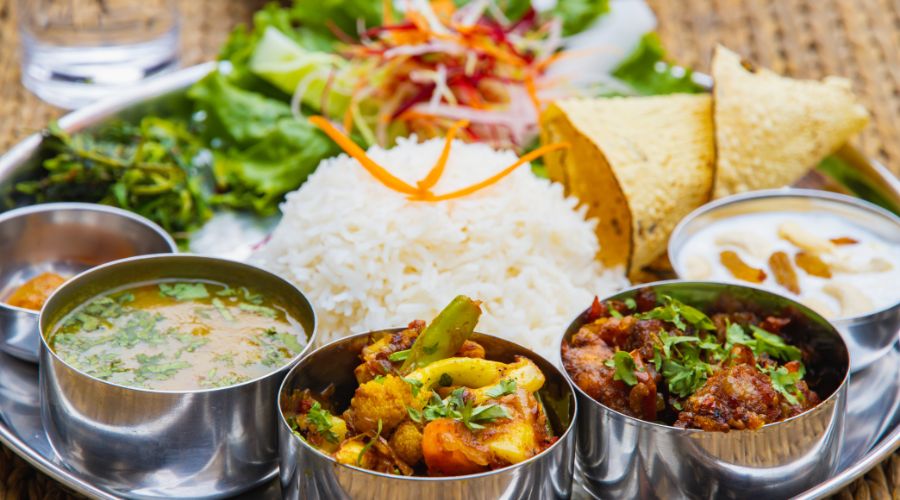
NEWSLETTER SIGNUP
Sign up to receive our trip ideas and travel offers!
Get updates and Exclusive Offers up to 20% Discount








